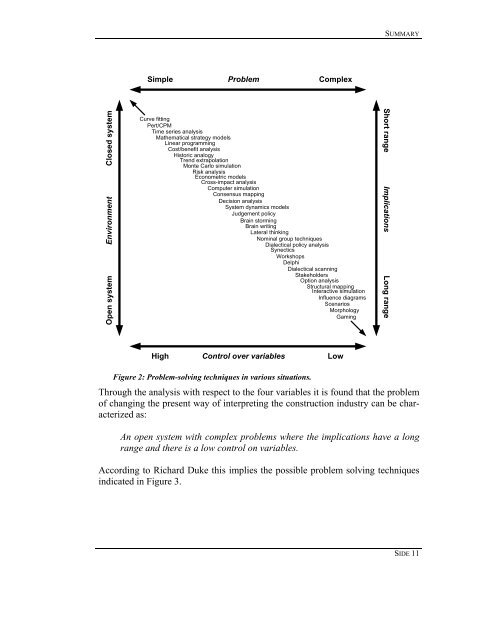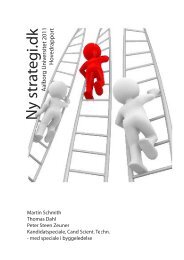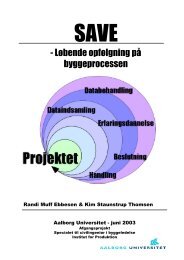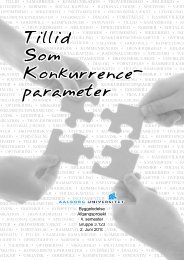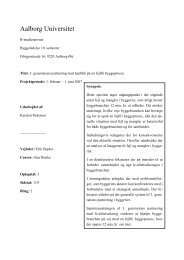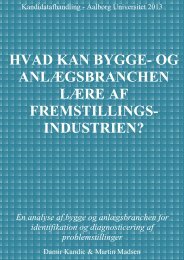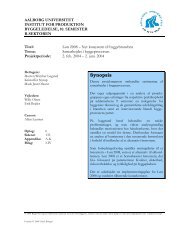Institut for produktion Civilingeniøruddannelsen i Byggeledelse
Institut for produktion Civilingeniøruddannelsen i Byggeledelse
Institut for produktion Civilingeniøruddannelsen i Byggeledelse
You also want an ePaper? Increase the reach of your titles
YUMPU automatically turns print PDFs into web optimized ePapers that Google loves.
Open system Environment Closed system<br />
Simple Problem Complex<br />
Curve fitting<br />
Pert/CPM<br />
Time series analysis<br />
Mathematical strategy models<br />
Linear programming<br />
Cost/benefit analysis<br />
Historic analogy<br />
Trend extrapolation<br />
Monte Carlo simulation<br />
Risk analysis<br />
Econometric models<br />
Cross-impact analysis<br />
Computer simulation<br />
Consensus mapping<br />
Decision analysis<br />
System dynamics models<br />
Judgement policy<br />
Brain storming<br />
Brain writing<br />
Lateral thinking<br />
Nominal group techniques<br />
Dialectical policy analysis<br />
Synectics<br />
Workshops<br />
Delphi<br />
Dialectical scanning<br />
Stakeholders<br />
Option analysis<br />
Structural mapping<br />
Interactive simulation<br />
Influence diagrams<br />
Scenarios<br />
Morphology<br />
Gaming<br />
High Control over variables Low<br />
SUMMARY<br />
Figure 2: Problem-solving techniques in various situations.<br />
Through the analysis with respect to the four variables it is found that the problem<br />
of changing the present way of interpreting the construction industry can be characterized<br />
as:<br />
An open system with complex problems where the implications have a long<br />
range and there is a low control on variables.<br />
According to Richard Duke this implies the possible problem solving techniques<br />
indicated in Figure 3.<br />
Short range Implications Long range<br />
SIDE 11


